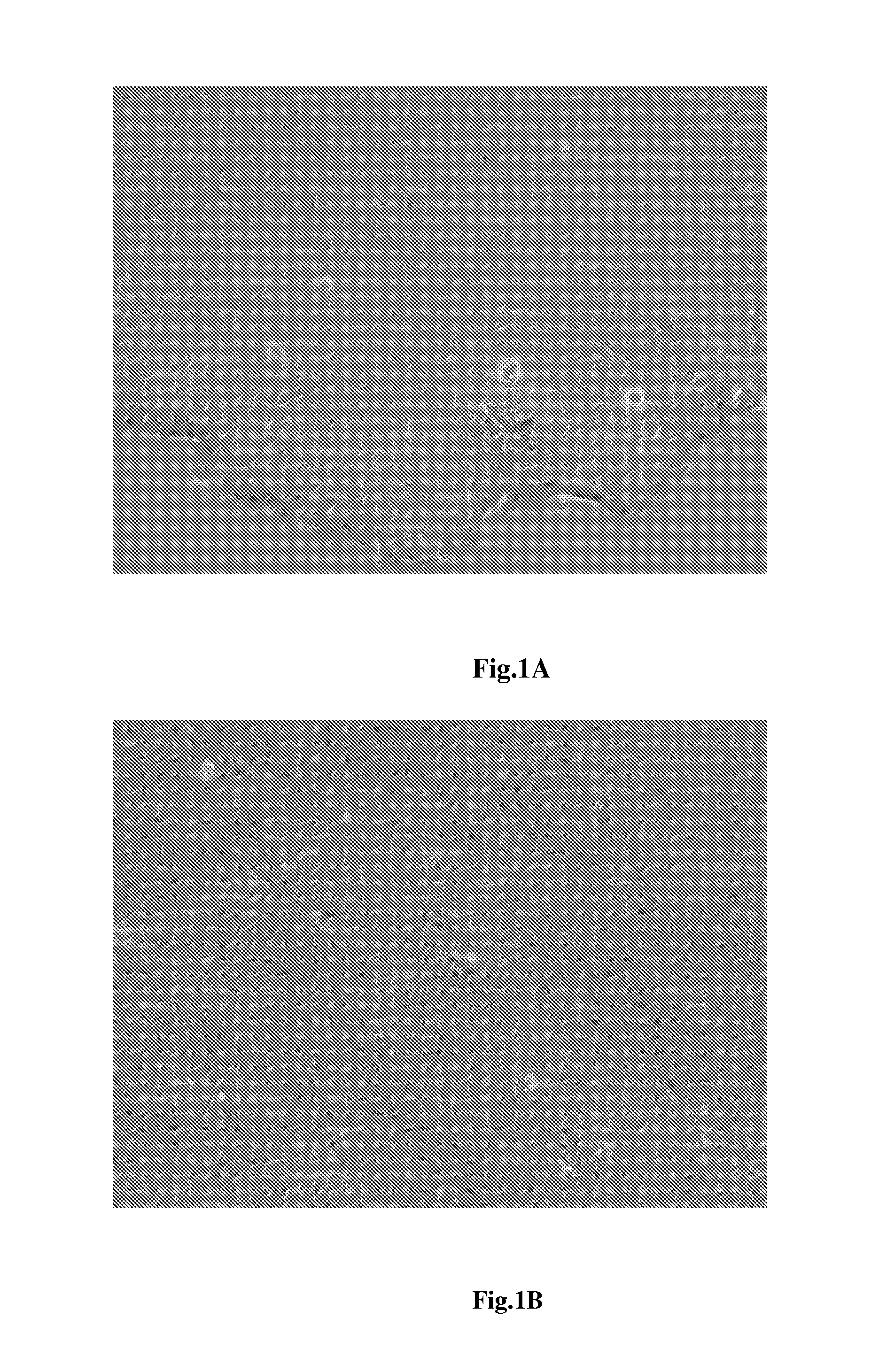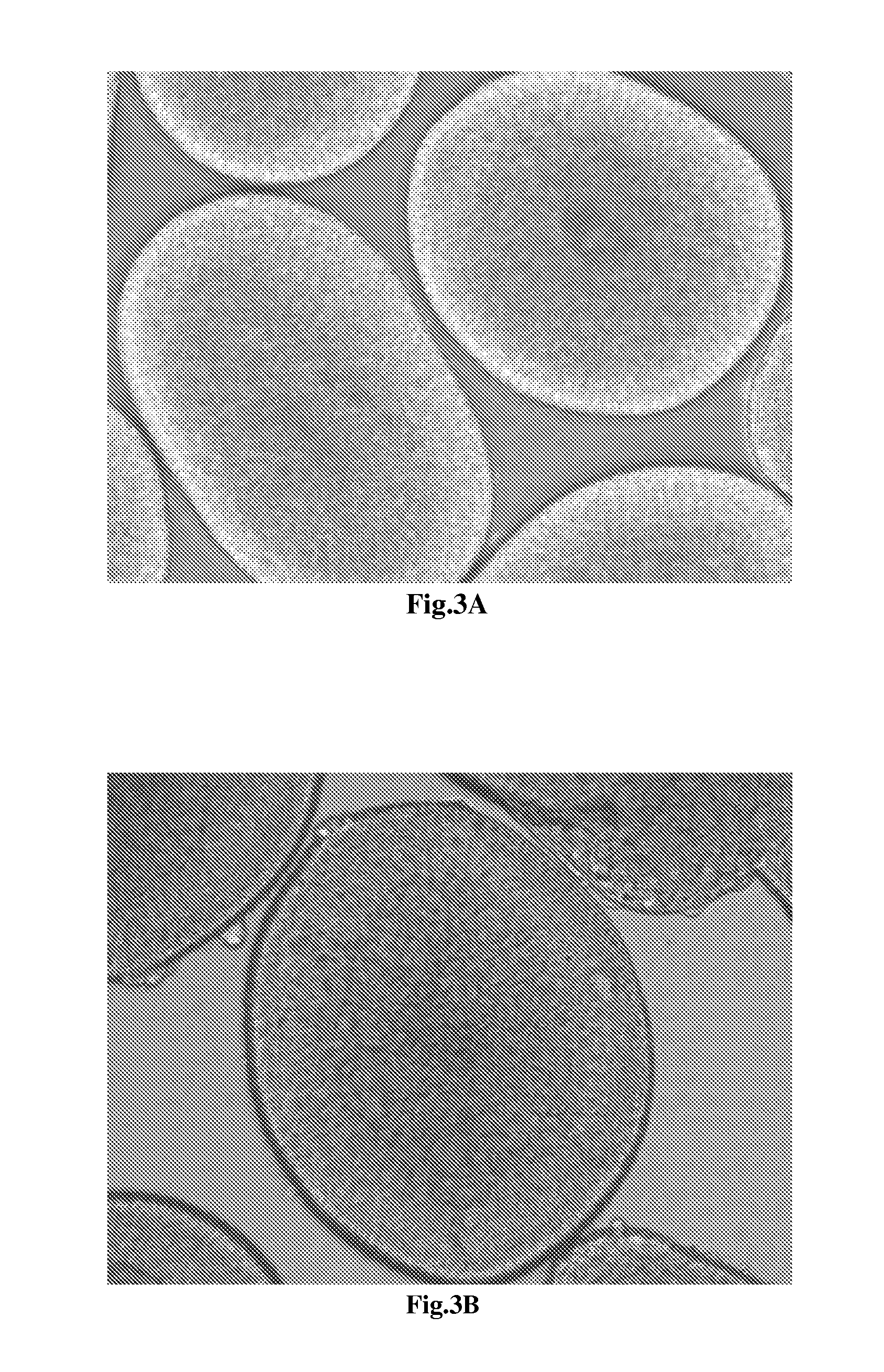Method for neuroepithelial cells differentiation from pluripotent stem cells and medium using same
a technology of neuroepithelial cells and stem cells, applied in the direction of embryonic cells, cell culture active agents, artificial cell constructs, etc., can solve the problems of poor efficiency of neural differentiation, contaminated non-neural cells, and large cost, and achieve the effect of shortening time cost and high purity
- Summary
- Abstract
- Description
- Claims
- Application Information
AI Technical Summary
Benefits of technology
Problems solved by technology
Method used
Image
Examples
example 1
Generation of Embryoid Body from Embryonic Stem Cells
[0045]The human embryonic stem cells, TW1 cells, are cultured at 37° C. and 5% CO2, first. Following the pre-culture, the aggregated clones of embryonic stem cells are selected for the further suspension culture within DMEM-F12 containing 20% knock-out replacement serum (KSR, Invitrogen, USA) at 37° C. and 5% CO2 for two days to generate the embryoid bodies.
example 2
Induction of the Neural Differentiation of Pluripotent Stem Cells into Neuroepithelial Cells
[0046]The embryoid bodies generated in example 1 are collected in the 15 mL centrifuge tube and placed at room temperature for descending the embryoid bodies and discarding the supernatant. Prepare 500 mL of first neural induction medium which contains the basic constitutions listed in table 1 and additive drugs including 0.5 μM BIO, 10 μM SB431542 and 10 ng / ml FGF2.
[0047]Notably, the announcement has to be emphasized here is that the working concentration of these additive drugs in the first neural induction medium are not restricted on what we indicated. The working concentration of BIO is between 0.05 μM to 0.5 μM; the working concentration of SB431542 is between 1 μM to 100 μM; and the working concentration of FGF2 is between 1 ng / ml to 100 ng / ml. The collected cells are further cultured with the first neural induction medium for two days to generate neuroepithelial cells as shown in FIG....
example 3
Further Induction of Neural Differentiation into Neuroepithelial Cells
[0048]The neuroepithelial cells gained in example 2 are switched from first neural induction medium to secondary neural induction medium which is added with 10 ng / ml FGF2 for maintaining the further differentiation into neuroepithelial cells. Herein, the constitutions of secondary neural induction medium are shown in table 2.
[0049]The cells finishing the neural differentiation are shown in FIG. 3 and FIG. 4 with 100×, 200×, and 400× magnifications under microscope. In FIG. 3A, the cultured cells reveal the homogenous morphology and form the globular structure units through tightly tubular aggregation at the edge. The FIG. 3B reveals the globular structure unit which contain the tightly tubular aggregation at the edge and rosette formations resembling the early neural tube in the center. The FIG. 3C shows that the cultured cells in the center of the globular unit form rosette clump resembling the neural tube-like s...
PUM
 Login to View More
Login to View More Abstract
Description
Claims
Application Information
 Login to View More
Login to View More - R&D
- Intellectual Property
- Life Sciences
- Materials
- Tech Scout
- Unparalleled Data Quality
- Higher Quality Content
- 60% Fewer Hallucinations
Browse by: Latest US Patents, China's latest patents, Technical Efficacy Thesaurus, Application Domain, Technology Topic, Popular Technical Reports.
© 2025 PatSnap. All rights reserved.Legal|Privacy policy|Modern Slavery Act Transparency Statement|Sitemap|About US| Contact US: help@patsnap.com



